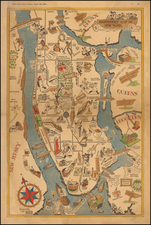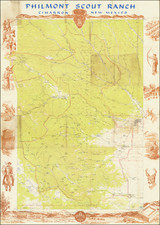Search
Albert Hirschfeld (June 21, 1903 – January 20, 2003) was an American caricaturist best known for his black and white portraits of celebrities and Broadway stars.
Born in St. Louis, Missouri, Albert Hirschfeld moved with his family to New York City, where he received his art training at the Art Students League of New York.
n 1924, Hirschfeld traveled to Paris and London, where he studied painting, drawing and sculpture. When he returned to the United States, a friend, fabled Broadway press agent Richard Maney, showed one of Hirschfeld's drawings to an editor at the New York Herald Tribune, which got Hirschfeld commissions for that newspaper and then, later, The New York Times.
Hirschfeld's style is unique, and he is considered to be one of the most important figures in contemporary drawing and caricature, having influenced countless artists, illustrators, and cartoonists. His caricatures were regularly drawings of pure line in black ink, for which he used a genuine crow quill.
Readers of The New York Times and other newspapers prior to the time they printed in color will be most familiar with the Hirschfeld drawings that are black ink on white illustration board. However, there is a whole body of Hirschfeld’s work in color. Hirschfeld’s full-color paintings were commissioned by many magazines, often as the cover. Examples are TV Guide, Life Magazine, American Mercury, Look Magazine, The New York Times Magazine, The New Masses, and Seventeen Magazine. He also illustrated many books in color, most notably among them Harlem As Seen By Hirschfeld, with text by William Saroyan.
Hirschfeld started young and continued drawing to the end of his life, thus chronicling nearly all the major entertainment figures of the 20th century. During his eight-decade career, he gained fame by illustrating the actors, singers, and dancers of various Broadway plays, which would appear in advance in The New York Times to herald the play's opening. Though the theater was his best-known field of interest, according to Hirschfeld's art dealer Margo Feiden, he actually drew more for the movies than he did for live plays. "By the ripe old age of 17, while his contemporaries were learning how to sharpen pencils, Hirschfeld became an art director at Selznick Pictures. He held the position for about four years, and then in 1924 Hirschfeld moved to Paris to work and lead the Bohemian life. Hirschfeld also grew a beard, necessitated by the exigencies of living in a cold water flat. This he retained for the next 75 years, presumably because "you never know when your oil burner will go on the fritz."
In addition to Broadway and film, Hirschfeld also drew politicians, TV stars, and celebrities of all stripes from Cole Porter and the Nicholas Brothers to the cast of Star Trek: The Next Generation. He also caricatured jazz musicians— Glenn Miller, Duke Ellington, Count Basie, Dizzy Gillespie, Billie Holiday, and Ella Fitzgerald—and rockers The Beatles, Elvis Presley, Bruce Springsteen, Bob Dylan, Jerry Garcia, and Mick Jagger. In 1977 he drew the cover of Aerosmith's Draw the Line album.
Hirschfeld drew many original movie posters, including for Charlie Chaplin's films, as well as The Wizard of Oz (1939). The "Rhapsody in Blue" segment in the Disney film Fantasia 2000 was inspired by his designs, and Hirschfeld became an artistic consultant for the segment; the segment's director, Eric Goldberg, is a longtime fan of his work. Further evidence of Goldberg's admiration for Hirschfeld can be found in Goldberg's character design and animation of the genie in Aladdin (1992). He was the subject of the Oscar-nominated documentary film, The Line King: The Al Hirschfeld Story (1996).
Al Hirschfeld famously contributed to The New York Times for more than seven decades. His work also appeared in The New York Herald Tribune, The Old World, The New Yorker Magazine, Collier's, The American Mercury, TV Guide, Playbill, New York magazine, and Rolling Stone.
In 1941, Hyperion Books published Harlem As Seen By Hirschfeld, with text by William Saroyan.[12]
Hirschfeld's illustrations for the theater were gathered and published yearly in the books, The Best Plays of ... (for example, The Best Plays of 1958-1959).[13]
Additional collections of Hirschfeld's illustrations include: Manhattan Oasis, Show Business Is No Business (1951), American Theater, The American Theater as Seen by Al Hirschfeld, The Entertainers (1977), Hirschfeld by Hirschfeld (1979), The World of Al Hirschfeld (1970), The Lively Years, 1920-1973 with text by Brooks Atkinson, Hirschfeld’s World (1981), Show Business is No Business with preface and endnotes by Margo Feiden (1983), A Selection of Limited Edition Etchings and Lithographs with text by Margo Feiden (1983), Art and Recollections From Eight Decades (1991), Hirschfeld On Line (2000), Hirschfeld’s Hollywood (2001), Hirschfeld’s New York (2001), Hirschfeld’s Speakeasies of 1932 with Introduction by Pete Hamill (2003), and Hirschfeld’s British Isles (2005).
Hirschfeld collaborated with humorist S. J. Perelman on several publications, including Westward Ha! Or, Around the World in 80 Clichés, a satirical look at the duo's travels on assignment for Holiday magazine. In 1991, the United States Postal Service commissioned him to draw a series of postage stamps commemorating famous American comedians. The collection included drawings of Stan Laurel, Oliver Hardy, Edgar Bergen (with Charlie McCarthy), Jack Benny, Fanny Brice, Bud Abbott, and Lou Costello. He followed that with a collection of silent film stars including Rudolph Valentino, ZaSu Pitts and Buster Keaton. The Postal Service allowed him to include Nina's name in his drawings, waiving their own rule forbidding hidden messages in United States stamp designs.
Hirschfeld expanded his audience by contributing to Patrick F. McManus' humor column in Outdoor Life magazine for a number of years.
Permanent collections of Hirschfeld's work are in the Metropolitan Museum of Art and the Museum of Modern Art in New York.
A permanent collection at the Margo Feiden Galleries Ltd. includes seventy-five years of Hirschfeld's original drawings, limited edition lithographs and etchings, and archives.
The Martin Beck Theatre, which opened November 11, 1924, at 302 West 45th Street, was renamed to become the Al Hirschfeld Theatre on June 21, 2003. It reopened on November 23, 2003, with a revival of the musical Wonderful Town. Hirschfeld was also honored with a star on the St. Louis Walk of Fame.
In 2002, Al Hirschfeld was awarded the National Medal of Arts. He was an Honorary Member of the Salmagundi Club.


